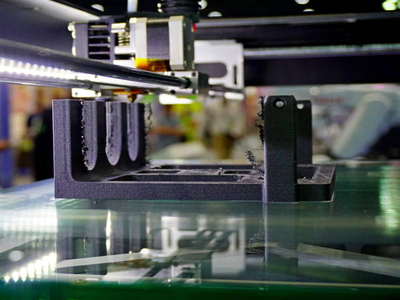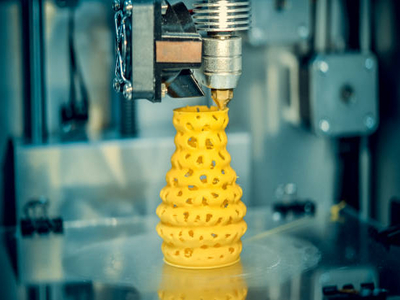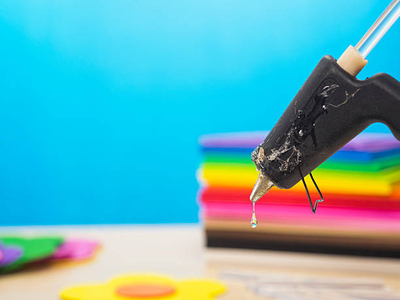When 3D printing, plastic is extruded through a hot end, cooled, and then deposited layer by layer according to the STL file’s instructions.
But, the size of your object is limited by the size of your printer.
If you need to make a component that is too big for your 3D printer’s build volume, consider gluing two or more completed parts together.
In this post, we are going to discuss how to glue 3D prints.
How to glue 3D prints
In order to glue 3D prints, you will need to use a bonding agent that can adhere to the surfaces of the 3D-printed parts.
There are a number of different bonding agents that can be used for this purpose, including cyanoacrylate adhesive, two-part epoxy, and weld bead.
Each of these options has its own advantages and disadvantages, so it is important to choose the bonding agent that is best suited for your specific application.
After the bonding agent has been applied, the two components can be aligned and pressed together until they’re completely bonded.
Watch this video on how to glue 3D-printed parts together:
Superglue
When it comes to gluing 3D-printed pieces together, there are a number of alternative solutions.
For most jobs, however, nothing is quite as successful as cyanoacrylate or super glue.
Cyanoacrylate forms a strong barrier that protects against corrosion and other harm accumulation over time.
There is simply no better option than superglue when it comes to gluing two parts together.
It is the glue of choice for any 3D printed job, thanks to its easy application and unrivaled strength.
Read our related article on the Best Glue Stick for 3D Printing for more glue options.
Acetone

Acetone or another paint thinner can be used as a joining agent in 3D-printed components made from ABS or HIPS.
Because it has excellent solvency qualities and evaporates very rapidly, acetone can dissolve plastic and form a strong connection between different sections.
Read More: Best ABS 3D Printer. Here are our top ABS printer picks!
Plumber’s Cement
Plumbers ABS cement is one option that should not be overlooked as it is intended for use with ABS pipe but can also join ABS, PLA, and HIPS plastic together.
Plumber’s ABS cement is also heat and moisture-resistant, making it an excellent alternative for applications where those factors are important.
Epoxy
Epoxy, available in both liquid and solid forms, is a substance that is used to glue two pieces of plastic together and can be found at most hardware stores.
Epoxy is a versatile adhesive that works on a wide range of plastics.
Epoxy hardens as it cures, so it may not be the ideal solution for connecting flexible materials.
If you are working with flexible plastics, you might want to look at different adhesives.
Polyurethane and Silicone Glues

When it comes to glues, there are many different options to choose from, but the two most popular choices are PU (polyurethane) and silicon.
Both are very easy to use, and they create a pretty strong bond. So which one is the best choice for your needs?
As it is resistant to both water and UV light, PU glue is ideal for outdoor projects and can be used on a variety of materials, including wood, plastic, metal, and glass.
Silicon glue is also waterproof and UV resistant, making it a good choice for outdoor projects as well.
However, it should not be used on porous materials, such as wood, as it can cause the material to swell.
With that being said, silicon glue is great for use in high-temperature applications, as it can withstand temperatures up to 400 degrees Fahrenheit.
If you need waterproof and UV-resistant glue for an outdoor project, then PU glue is a good option.
If you need glue that can withstand high temperatures or you are not working with a porous material, then silicon glue is the better choice.
Read our related article on the Best Glue for PLA to see what we think works best!
Hot Glue Gun

At first glance, traditional hot glue may seem like an unlikely choice for bonding 3D-printed parts together.
Like other liquid glues, hot glue forms a strong bond that holds the parts in place without the need for metal fasteners or other strong fixation methods.
However, unlike many types of glue, hot glue is visible when it is dried and applied, leaving a noticeable residue on the surfaces of new or finished prints.
Despite this minor drawback, hot glue remains one of the most popular options for attaching 3D-printed parts together.
Unlike alternatives such as epoxy adhesives or cyanoacrylate glue (superglue), traditional hot glue requires no special tools or equipment to use effectively.
Simply heat up some glue in your regular household glue gun, apply it to your pieces as needed, and hold them firmly together until the bond sets.
Final Thoughts
Whether you’re bonding 3D-printed parts together for a DIY project or for a commercial application, there are a variety of glues to choose from.
Each adhesive offers its own set of benefits and drawbacks, so it is important to carefully consider your needs and the properties of the materials being glued before making a final decision.
Articles You Might Want to Read
- Charcoal Art Supplies
- Pigment Ink vs Dye Ink: Know the Actual Difference Between Them
- Printers That Use HP 920 Ink Cartridge
- Free 3D Printing Software
- Best Edible Printers for Cakes